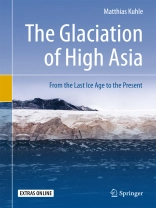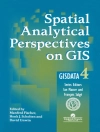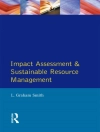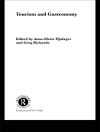This book summarizes four decades of glacial-geomorphological field research in Central and High Asia in an attempt to draw a significant link between Quaternary science research and paleoclimatology. Based on the latest geomorphological findings, this study offers a large-scale reconstruction of the Last Glacial Maximum (LGM) that in High Asia encompassed a total expanse of no less than three million km2, including the Central Tibetan plateau with 2.4 million km2. The author offers a complete reconstruction of the Late Glacial, Holocene, and Historical glacier advances as well as the successive Postglacial ablation stages extending to the present.
Taken together, the findings presented here provide the first insights into a global-climatic impact of the Last Glacial Maximum in Central and High Asia with respect to the current interglacial stage. The comparative data analyses point to an inland glaciation at subtropical latitude covering an area larger than the Nordic inland glaciation in Greenland. These insights are facilitated by a methodological approach, unprecedented in modern Quaternary research, that combines high-quality panoramic photography with high-resolution satellite imagery. This combination of terrestrial and aerial perspectives enables scientists and readers alike to visualize the geomorphology of the landscape as a three-dimensional space. The author’s successful union of digital big data resources with classical geomorphological analysis offers an exciting new template for future research in Quaternary science and related fields.
Table des matières
Preface.- 1. Method.- 1.1. Preliminary methodological remarks.- 1.2. Methods in the sense of working techniques.- 2. Research areas.- 2.1. The glaciation of the Pangong Co area in WSW Tibet.- 2.2. The High Glacial outlet glacier of the Shyok Valley in connection with the Pangong Co outlet glacier on the western margin of Tibet.- 2.3. The High Glacial Indus Glacier in the middle Indus Valley at the western margin of Tibet.- 2.4. The actual, historical, neoglacial, and Late Glacial to High Glacial glaciation of Central Tibet .- 2.5. Excursus to the contradictory TCN datings as well as to to the lake ages on a 14C basis taken from the published literature – all in regard to the past glaciation of Tibet.- 2.6. Comparisons of tills and lakes from Central Tibet with those in Arctic glacial areas.- 2.7. The present to Holocene glaciation of the Purog Kangri, especially its western slope in the center of Central Tibet.- 2.8. The Last Glacial (Last Glacial and Stage 0 = Würm Ice Age, LGP, LGM, MIS 3-2) glaciation of Purog Kangri and its immediate and more distant surroundings in the center of Central Tibet.- 2.9. Further terrestrial evidence from the center of the plateau regarding the inland glaciation of Tibet during the Pleistocene ice ages including the last time during the LGP (Last Glacial Period, Stage 0-IV, MIS 3-2).- 2.10. The outcome of the field evidence regarding the High to Late Glacial glaciation between the northern slope of the culmination of Central Tibet at the Dogai Coring and the southern slope of its culmination at Pung Co and Nam Co.- 2.11. Cross-referencing ice-margin and glacier reconstructions from the Last Ice Age until the present with empirical findings of field research from other regions of High Asia not covered in this book.- 3. On the chronology of the prehistoric glacial ice cover.- 4. The overall picture of the maximal ice expansion in High Asia during the Last Ice Age.- 4.1. The height of the prehistoric inland ice surface in Tibet.- 4.2. The lack of cirques as evidence for a last inland glaciation of Tibet during the Last Ice Age (LGP, LGM, Würm Glacial).- 5. The palaeoclimatic significance of the Ice Age glaciation of High Asia.- 5.1. Modeling of the maximal ice expansion in High Asia for the estimation of precipitation conditions.- 6. The nourishment areas of the High Glacial, Late Glacial, and present glaciation of High Asia and the resulting ablation areas – a summary.- 6.1. The transformation of glacier forms, glacier budgets, and glacier types from the Last Ice Age to the present.- Index.
A propos de l’auteur
Matthias Kuhle (*20 April 1948 in Berlin; † 25 April 2015 near Yaruphant, Nepal) was an internationally renowned German geographer at the Georg-August-Universität Göttingen, where he was a Professor of Geography and High Mountain Geomorphology from 1983 until his death in 2015. His main research area was the geomorphological reconstruction of a High Glacial inland ice sheet in High Asia, including Central Tibet. He studied geography, German philology, and philosophy at the Freie Universität Berlin, and completed his Ph.D. on former glaciations in southern Iran. Subsequently, he extended his research focus to include the extreme high mountain regions of High Asia, most notably the Himalayas and Karakoram. Between 1973 and 2015, he conducted more than 44 scientific expeditions into these regions and other high-mountain areas around the world. Another of Dr. Kuhle’s research interests, shared with his wife Sabine Kuhle, was the philosophy of science and the cultural evolution of Western logic. On 25 April 2015, M. Kuhle unexpectedly died during an earthquake in Nepal.












